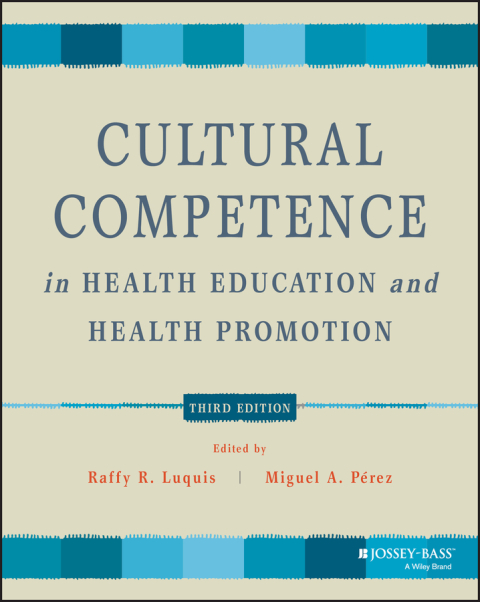Description
Efnisyfirlit
- COVER
- TITLE PAGE
- COPYRIGHT PAGE
- FOREWORD FOR THIRD EDITION
- PREFACE
- THE EDITORS
- THE CONTRIBUTORS
- ACKNOWLEDGMENTS
- ABOUT THE COMPANION WEBSITE
- CHAPTER 1: THE CHANGING US DEMOGRAPHIC PROFILE
- Introduction
- Demographic Shifts
- Demographics of Racial and Ethnic Groups
- Ethnic and Racial Groups Stereotypes and Health Education
- Conclusion
- Points to Remember
- Case Study
- References
- Note
- CHAPTER 2: DIVERSITY, CULTURAL COMPETENCE, AND HEALTH PROMOTION
- Introduction
- Defining Diversity, Race, Culture, and Ethnicity: Implications for Health Education
- Cultural Practices and Their Impact on Health Education Strategies and Outcomes
- Cultural Competence Principles and Practices in Diverse Settings
- Cultural Competence: Working across Cultures
- Conclusion
- Points to Remember
- Case Study
- References
- CHAPTER 3: HEALTH EQUITY, HEALTH DISPARITIES, AND SOCIAL DETERMINANTS OF HEALTH
- Introduction
- Health Equity and Equality
- Morbidity Indicators for Selected US Population Groups
- Race/Ethnicity, Gender, Age, and Disability
- Social Determinants of Health
- Racism/Discrimination and Its Impact on Health Education
- Primary Prevention, Health Education, and Health Disparities
- Suggestions for Working With Diverse Groups
- Conclusion
- Points to Remember
- Case Study
- References
- CHAPTER 4: COMPLEMENTARY, ALTERNATIVE, AND INTEGRATIVE HEALING APPROACHES IN CULTURALLY COMPETENT HEALTH PROMOTION
- Introduction
- Definitions of Concepts in Nontraditional Healing
- Use of Complementary, Alternative, and Integrative Health Approaches
- Spending for Complementary Health Approaches
- Complementary Health Approaches
- Complementary, Alternative, and Integrative Health in Racial and Ethnic Groups
- Most Common Complementary Health Approaches Among Adults
- Most Common Complementary Health Approaches Among Children
- National Center for Complementary and Integrative Health (NCCIH)
- Complementary Health Approaches and Health Promotion and Education
- Current Research in Complementary, Alternative, and Integrative Health Approaches
- Suggestions for Working With Diverse Groups
- Conclusion
- References
- CHAPTER 5: RELIGION, SPIRITUALITY, AND CULTURAL DIVERSITY
- Introduction
- Religious Trends in the United States
- Impact of Religiosity and Spirituality on Health and Well‐Being
- Spiritually Based Interventions
- The Role of Religion in Cultural Beliefs and Practices
- Health Education and Faith‐Based Programs
- Implications for Health Education
- Conclusion
- Points to Remember
- Case Study
- References
- CHAPTER 6: THEORETICAL MODELS, ASSESSMENT FRAMEWORKS, AND MULTICULTURAL POPULATIONS
- Introduction
- Models for Assessing Cultural Competence
- Models for Developing Health Education Programs
- Suggestions for Working With Diverse Groups
- Conclusion
- Points to Remember
- Case Study
- References
- Notes
- CHAPTER 7: PLANNING, IMPLEMENTING, AND EVALUATING CULTURALLY APPROPRIATE HEALTH PROGRAMS
- Introduction
- Culture as Framework
- Considerations for Cultural and Linguistic Competence
- Theoretical Frameworks
- Assessment and Planning
- Strategies for Needs and Capacity/Asset Assessment
- Development of the Program and a Logic Model
- Tailoring of Program and Materials
- Implementation
- Evaluation
- Ethics, Culture, and Community‐Based Participatory Approaches
- Conclusion
- Points to Remember
- Case Study
- References
- CHAPTER 8: MULTICULTURAL HEALTH COMMUNICATION
- Introduction
- The Importance of Culture in Health Communication
- A Cultural Perspective of Verbal and Nonverbal Communication
- An Intercultural Communication Model
- Anxiety and Uncertainty in Intercultural Communication
- Achieving Effective Communication
- Conclusion
- Points to Remember
- Case Study
- References
- CHAPTER 9: HEALTH LITERACY, HEALTH EDUCATORS, AND CULTURALLY APPROPRIATE HEALTH EDUCATION PROGRAMS
- Introduction
- Health Literacy
- Health Literacy Impact
- Health Literacy and Healthy People 2030
- Health Literacy and Health Status
- Improving Health Literacy
- Health Literacy and Cultural Competence
- Bridging Health Literacy and Culture
- Health Literacy and the Electronic Frontier
- Conclusion
- Points to Remember
- Case Study
- References
- CHAPTER 10: AGING MATTERS
- Demographic Characteristics of Older Americans
- Our Living Century: Centenarians and Supercentenarians
- Building Culturally Appropriate Health Promotion Programs
- Health Literacy Among Older Adults
- Cultural Competence With Older Adults
- Healthy Aging and Health Education
- Suggestions for Working With Diverse Groups Among the Aging Population
- Conclusion
- Points to Remember
- Case Study
- References
- CHAPTER 11: CULTURE, SEXUAL MINORITIES, AND HEALTH EDUCATION
- The LGBTQ Culture
- Sex, Gender, and Sexual Orientation
- Health Issues of the LGBTQ Community
- Health Issues of LGBTQ Youths
- Health Issues of Lesbian and Bisexual Women
- Health Issues of Gay and Bisexual Men
- Effects of Biphobia on Health
- Health Issues in the Transgender Community
- Health Issues Among Other Sexual Minorities
- Health Issues of LGBTQ Racially and Ethnically Diverse Communities
- Increasing Cultural Sensitivity Toward the LGBTQ Community
- Conclusion
- Points to Remember
- Case Study
- Resources
- References
- CHAPTER 12: PEOPLE WITH DISABILITIES
- Introduction
- Prevalence of Disability
- Barriers Faced by Individuals With Disabilities
- Racial and Ethnic Disparities in Working With Individuals With Disabilities
- Health Concerns Facing Individuals With Disabilities
- Emerging Issues in Disability and Health
- Strategies of Disability and Health Inclusion
- Culture and Community of Individuals With Disabilities
- Culture of Special Education
- People‐First Language
- The Use of Universal Design for Diverse Populations
- Steps to Becoming a Culturally Competent Practitioner
- Additional Resources
- Conclusion
- Points to Remember
- Case Scenario
- References
- CHAPTER 13: BEYOND CULTURAL COMPETENCY
- Introduction
- The Need for Cultural and Linguistic Competence
- Cultural and Linguistic Competence in Health Education and Health Promotion
- Strategies to Incorporate Cultural and Linguistic Competence into Health Education and Health Promotion
- Standards for Cultural and Linguistic Competence in Health Education
- Conclusion
- Points to Remember
- References
- APPENDIX A: NATIONAL CULTURALLY AND LINGUISTICALLY APPROPRIATE SERVICES STANDARDS (NATIONAL CLAS STANDARDS)
- APPENDIX B: SELECTED LIST OF WEB RESOURCES FOR CULTURAL AND LINGUISTIC COMPETENCY
- NAME INDEX
- SUBJECT INDEX
- END USER LICENSE AGREEMENT






Reviews
There are no reviews yet.